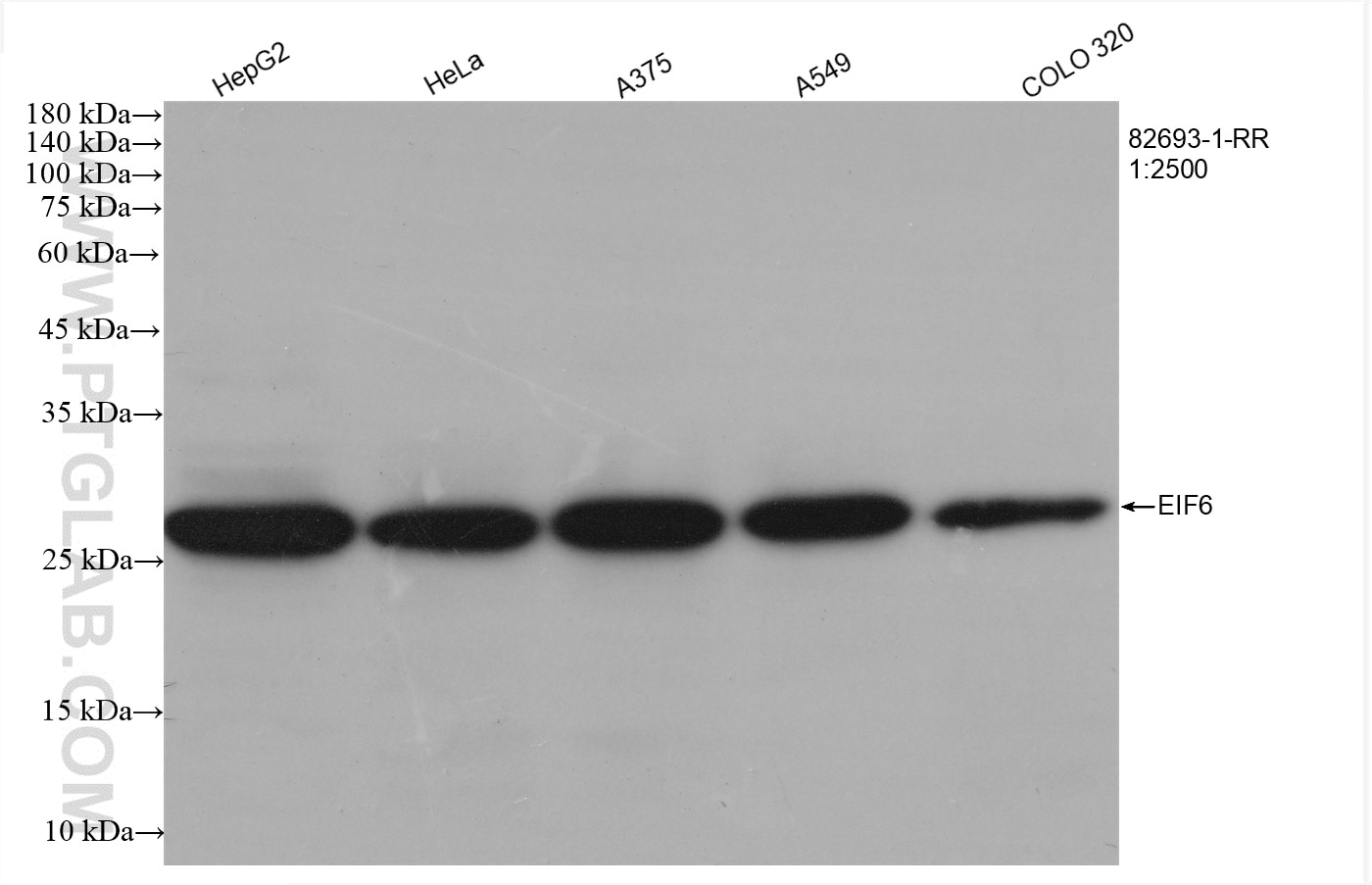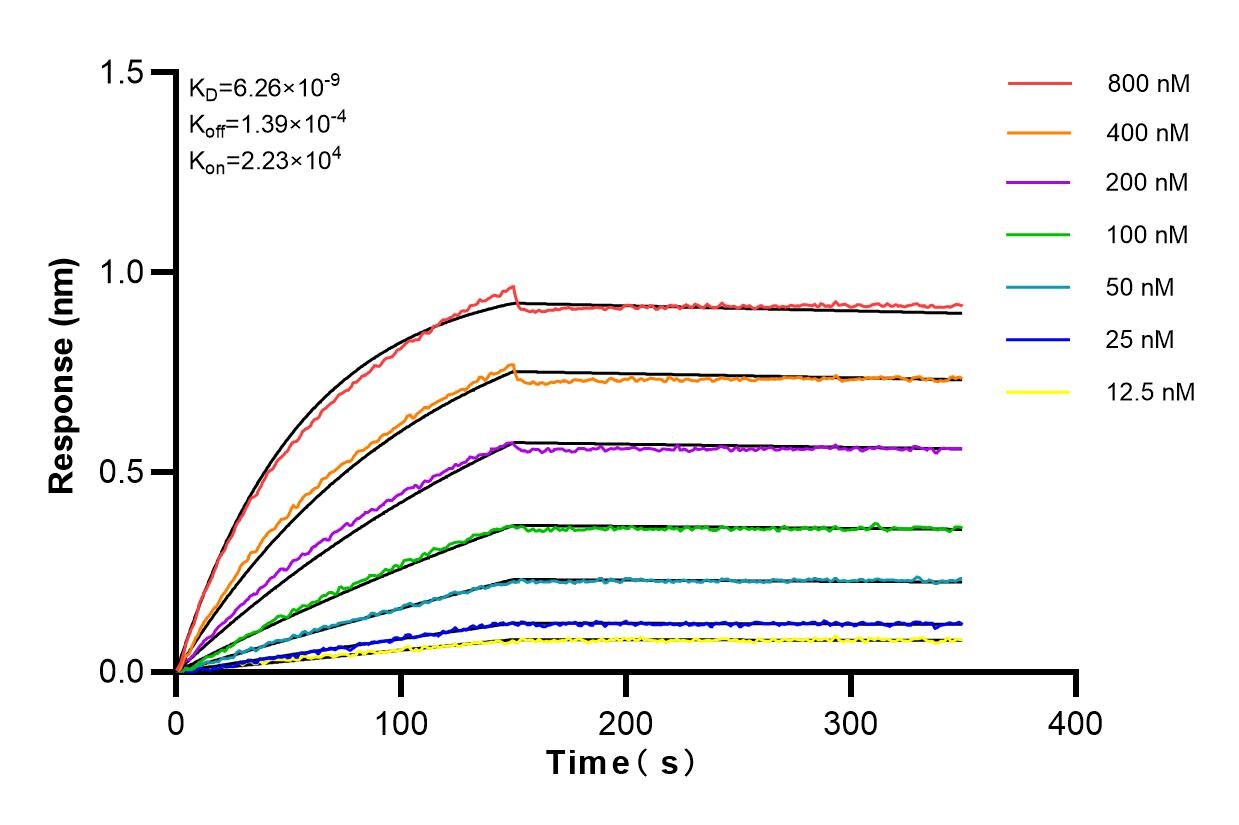Product Information
82693-1-PBS targets EIF6 in WB, Indirect ELISA applications and shows reactivity with Human samples.
| Tested Reactivity | Human |
| Host / Isotype | Rabbit / IgG |
| Class | Recombinant |
| Type | Antibody |
| Immunogen | EIF6 fusion protein Ag0324 Predict reactive species |
| Full Name | eukaryotic translation initiation factor 6 |
| Calculated Molecular Weight | 27 kDa |
| Observed Molecular Weight | 27 kDa |
| GenBank Accession Number | BC001119 |
| Gene Symbol | EIF6 |
| Gene ID (NCBI) | 3692 |
| Conjugate | Unconjugated |
| Form | Liquid |
| Purification Method | Protein A purification |
| UNIPROT ID | P56537 |
| Storage Buffer | PBS only , pH 7.3 |
| Storage Conditions | Store at -80°C. |
Background Information
p27(BBP/eIF6) is an evolutionarily conserved protein that was originally identified as p27(BBP), it functions as an interactor of the cytoplasmic domain of integrin 4 and as the putative translation initiation factor eIF6. p27BBP is found in two pools: one nuclear pool enriched in the perinucleolar region, and one cytoplasmic pool. p27BBP binds to the fibronectin type III domains of integrin 4 subunit (ITGB4), an important functional component of hemidesmosomes, and help link ITGB4 to the intermediate filament cytoskeleton. In vitro and in vivo studies demonstrated that p27BBP is essential for cell viability and has a primary function in the biogenesis of the 60S ribosomal subunit. p27BBP protein is increased in rapidly cycling cells and decreased in villous cells committed to apoptotic cell death. In dysplastic colorectal adenomas and carcinomas, p27BBP displayed a large increase of its nucleolar component and was associated with the nuclear matrix. In particular, p27BBP increased progressively from adenomas to carcinomas and was related to the tumor stage.





